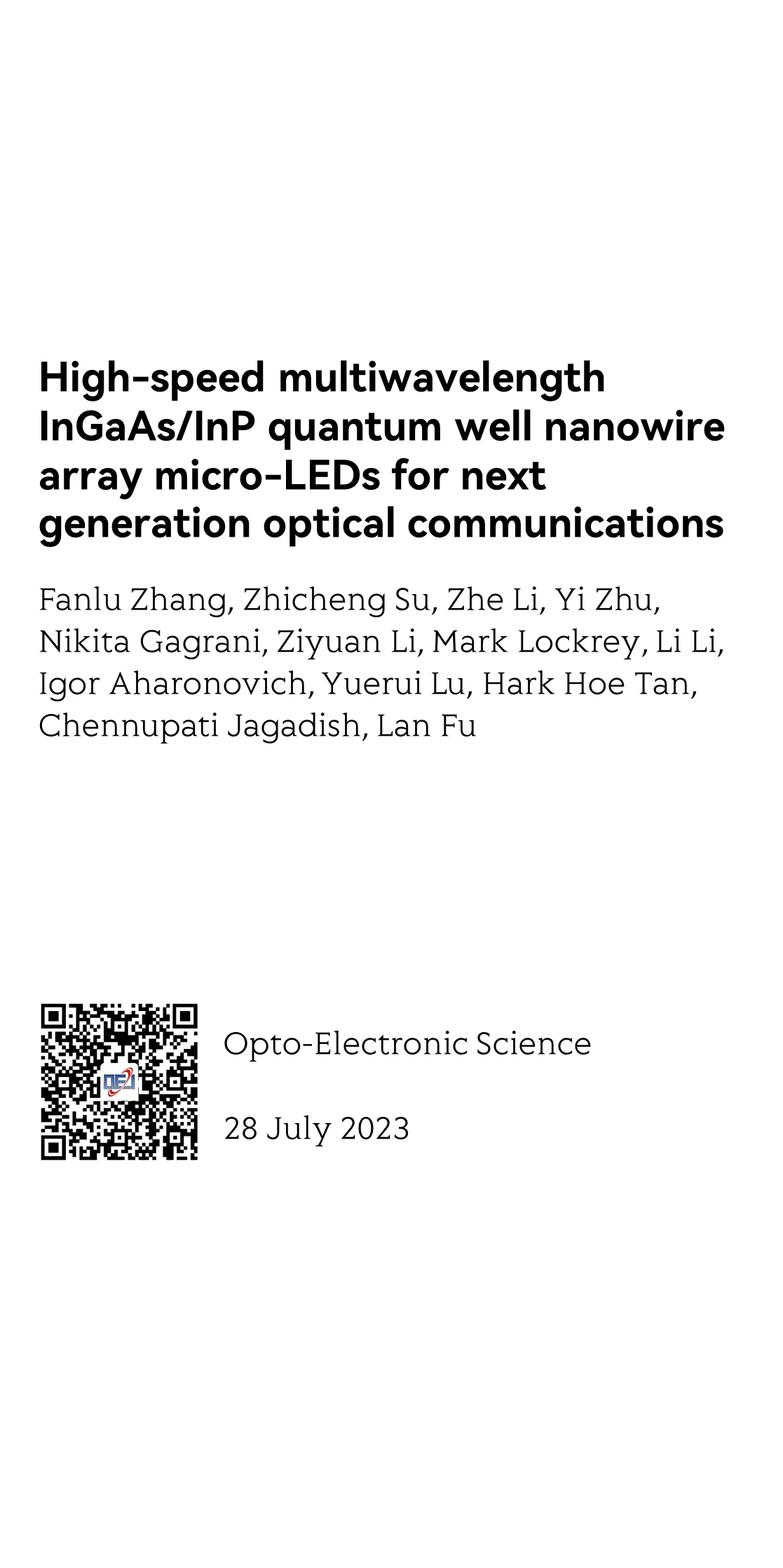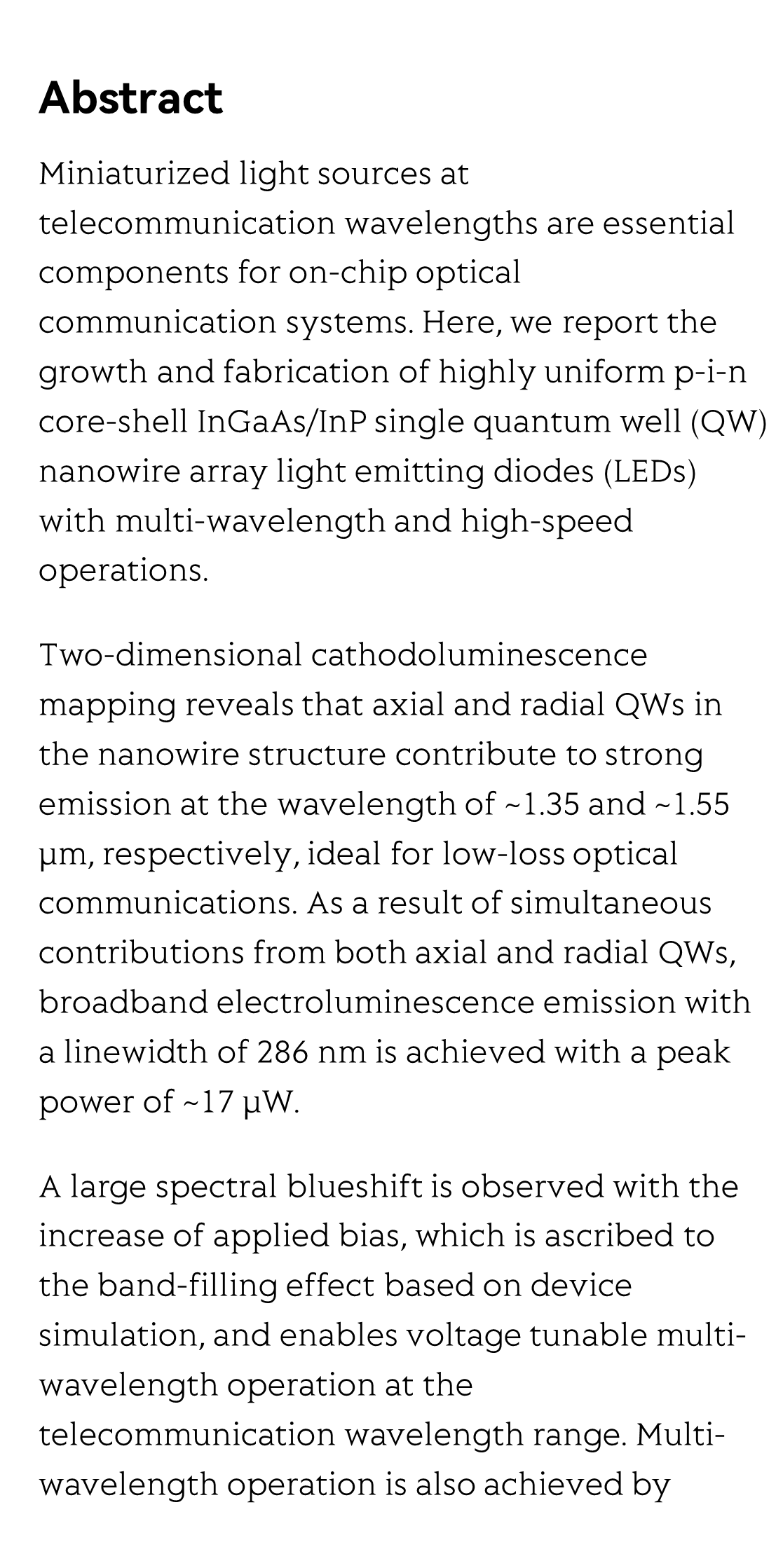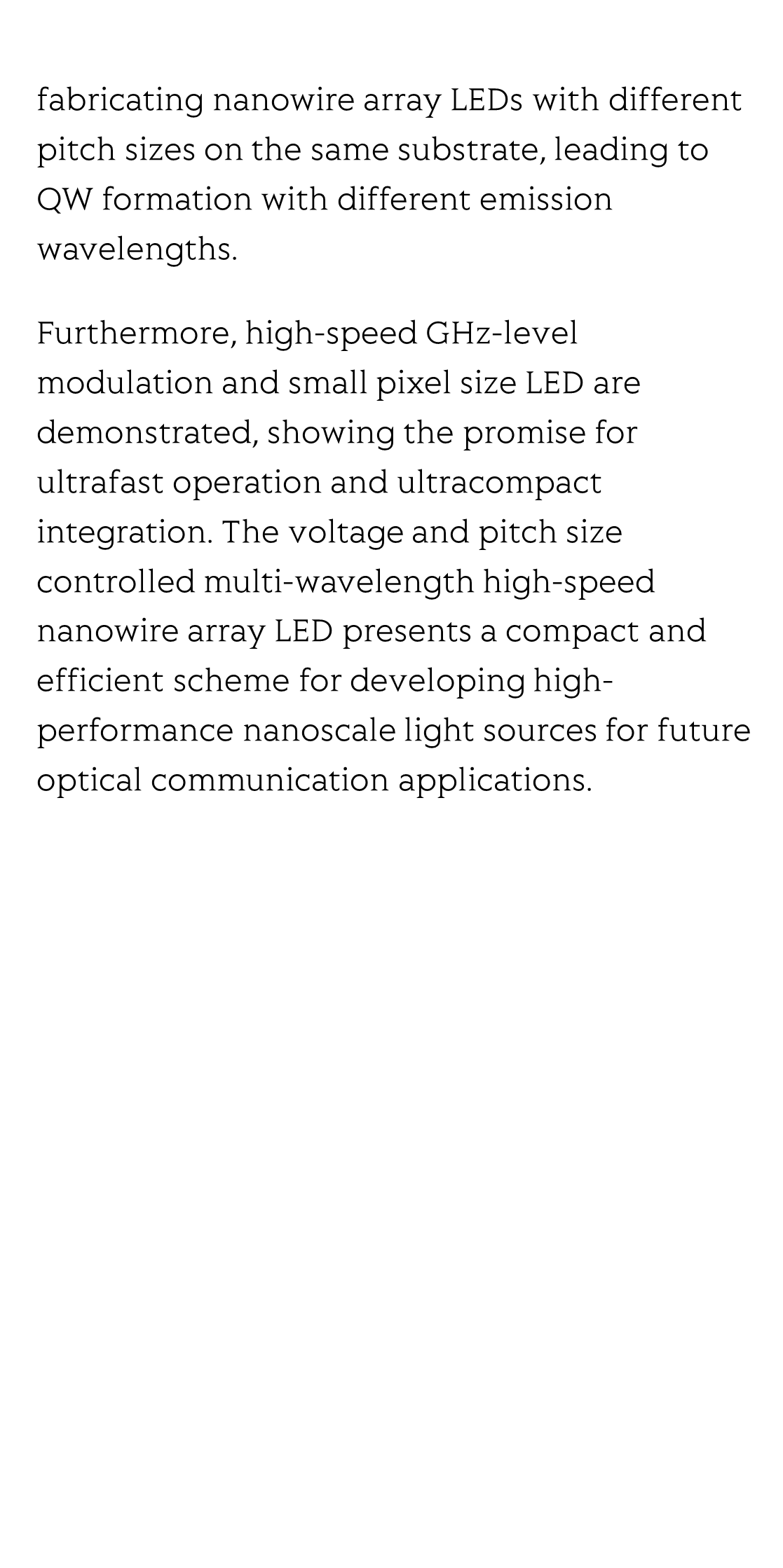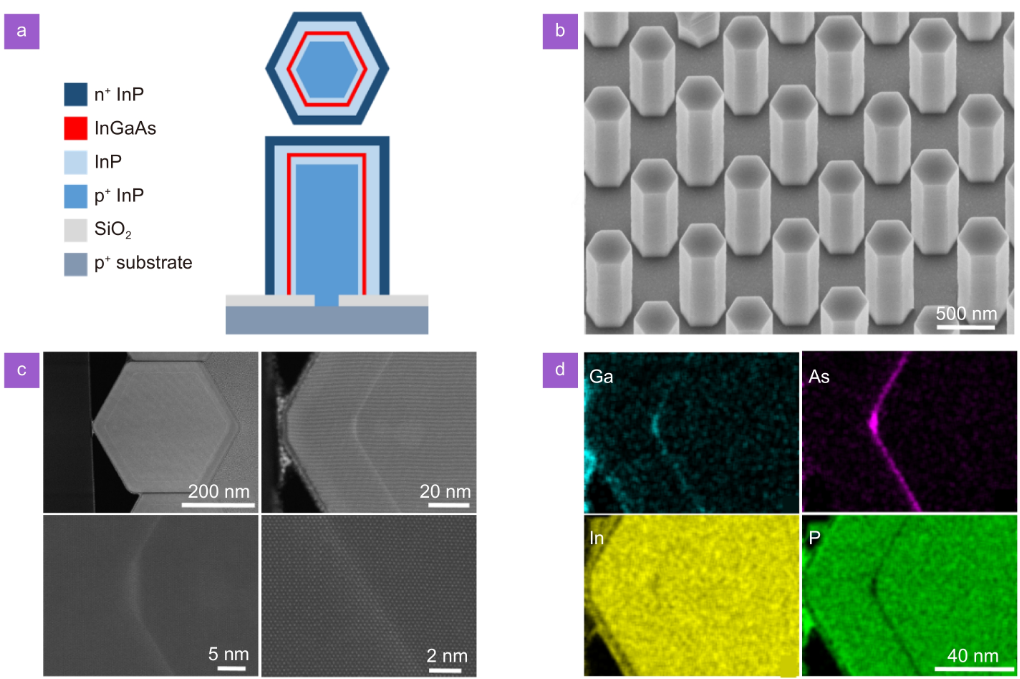(Peer-Reviewed) High-speed multiwavelength InGaAs/InP quantum well nanowire array micro-LEDs for next generation optical communications
Fanlu Zhang 张钒璐 ¹, Zhicheng Su 苏志诚 ¹ ², Zhe Li 李哲 ¹, Yi Zhu 朱毅 ¹, Nikita Gagrani ¹, Ziyuan Li 李子园 ¹, Mark Lockrey ³, Li Li 李丽 ⁴, Igor Aharonovich ⁵, Yuerui Lu 卢曰瑞 ⁶, Hark Hoe Tan ¹, Chennupati Jagadish ¹, Lan Fu 傅岚 ¹
¹ Australian Research Council Centre of Excellence for Transformative Meta-Optical Systems, Department of Electronic Materials Engineering, Research School of Physics, The Australian National University, Canberra ACT 2601, Australia
² School of Electronic Science and Engineering, Southeast University, Nanjing 210096, China
中国 南京 东南大学电子科学与工程学院
³ Microstructural Analysis Unit, University of Technology Sydney, Sydney NSW 2007, Australia
⁴ Australian National Fabrication Facility ACT Node, Research School of Physics, The Australian National University, Canberra ACT 2601, Australia
⁵ ARC Centre of Excellence for Transformative Meta-Optical Systems, Faculty of Science, University of Technology Sydney, Sydney NSW 2007, Australia
⁶ School of Engineering, College of Engineering and Computer Science, The Australia National University, Canberra, Canberra ACT 2601, Australia
Abstract
Miniaturized light sources at telecommunication wavelengths are essential components for on-chip optical communication systems. Here, we report the growth and fabrication of highly uniform p-i-n core-shell InGaAs/InP single quantum well (QW) nanowire array light emitting diodes (LEDs) with multi-wavelength and high-speed operations.
Two-dimensional cathodoluminescence mapping reveals that axial and radial QWs in the nanowire structure contribute to strong emission at the wavelength of ~1.35 and ~1.55 μm, respectively, ideal for low-loss optical communications. As a result of simultaneous contributions from both axial and radial QWs, broadband electroluminescence emission with a linewidth of 286 nm is achieved with a peak power of ~17 μW.
A large spectral blueshift is observed with the increase of applied bias, which is ascribed to the band-filling effect based on device simulation, and enables voltage tunable multi-wavelength operation at the telecommunication wavelength range. Multi-wavelength operation is also achieved by fabricating nanowire array LEDs with different pitch sizes on the same substrate, leading to QW formation with different emission wavelengths.
Furthermore, high-speed GHz-level modulation and small pixel size LED are demonstrated, showing the promise for ultrafast operation and ultracompact integration. The voltage and pitch size controlled multi-wavelength high-speed nanowire array LED presents a compact and efficient scheme for developing high-performance nanoscale light sources for future optical communication applications.
Flicker minimization in power-saving displays enabled by measurement of difference in flexoelectric coefficients and displacement-current in positive dielectric anisotropy liquid crystals
Junho Jung, HaYoung Jung, GyuRi Choi, HanByeol Park, Sun-Mi Park, Ki-Sun Kwon, Heui-Seok Jin, Dong-Jin Lee, Hoon Jeong, JeongKi Park, Byeong Koo Kim, Seung Hee Lee, MinSu Kim
Opto-Electronic Advances
2025-09-25
Dual-frequency angular-multiplexed fringe projection profilometry with deep learning: breaking hardware limits for ultra-high-speed 3D imaging
Wenwu Chen, Yifan Liu, Shijie Feng, Wei Yin, Jiaming Qian, Yixuan Li, Hang Zhang, Maciej Trusiak, Malgorzata Kujawinska, Qian Chen, Chao Zuo
Opto-Electronic Advances
2025-09-25







